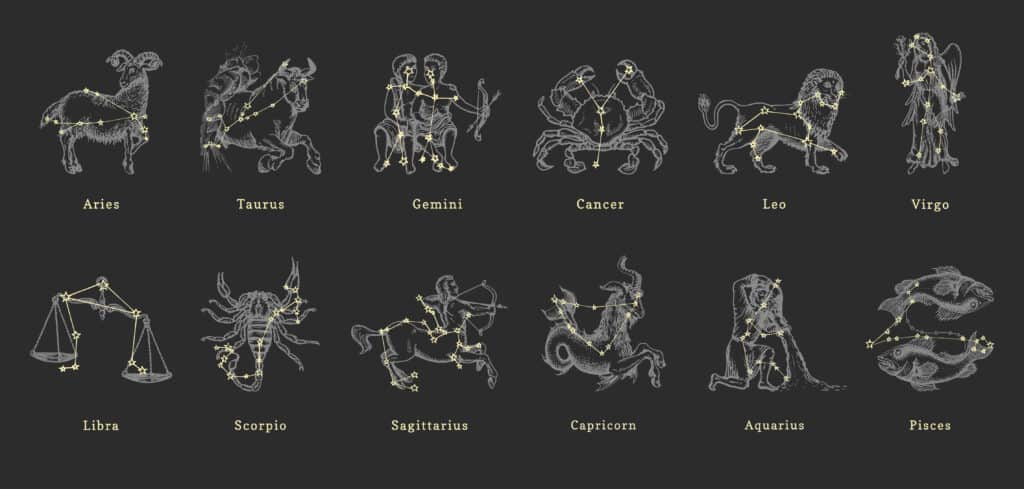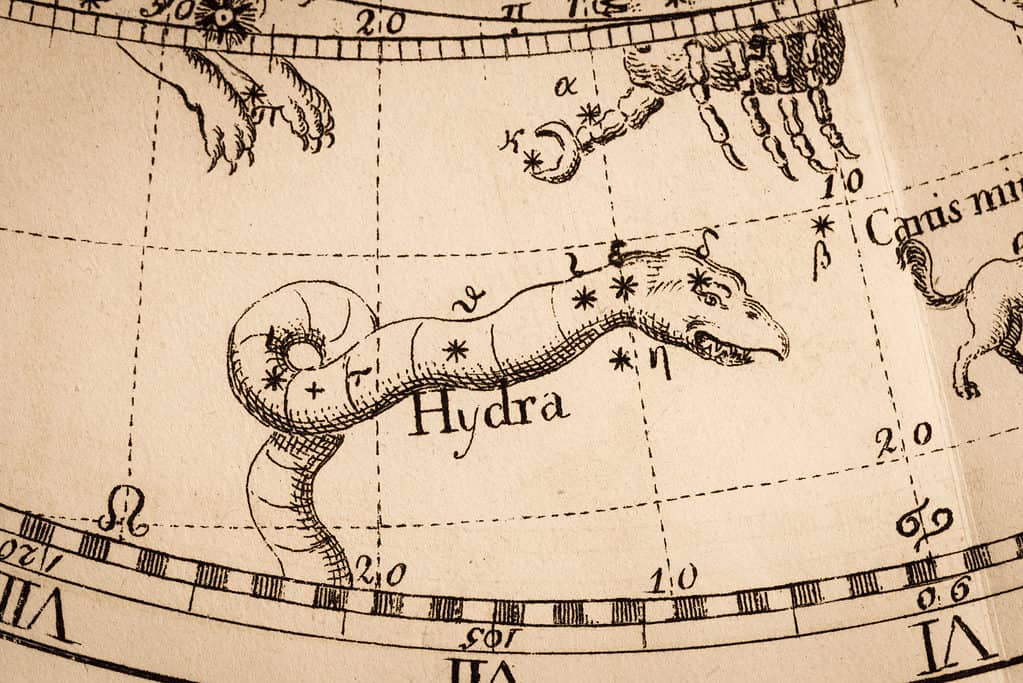If you don’t live in a big city, walking out into the night and looking up at the sky is one of the most mesmerizing experiences a human can have. The stars twinkling millions of light years away can remind us just how small we are in this big cosmos. Feeling small while sky-viewing is something that humans have experienced for a long time! Today, we will explore some of these star patterns and discover the largest constellation in the universe. Prepare to be star-struck!
What is a Constellation?

Taurus, the bull, is the oldest constellation known to man.
©iStock.com/Vladayoung
A constellation is simply an arrangement of sky stars resembling something. Sometimes, these constellations are extremely easy to see, and the origin of their names is clear. Other times, they are a bit more obscure. Some famous constellations include Orion (specifically his belt), the Big and Little Dippers, and Ursa Major (the Bear).
Seeing these constellations is pretty easy in a place with little to no light pollution. At least, seeing the stars within the constellations is pretty easy. Sometimes it may require a bit of imagination to see how a collection of stars looks like a bear, a tiger, or a unicorn, but humans have been naming them for quite a long time! The oldest constellation we know of is Taurus, the bull. Some estimates place Taurus around 17,000 years old after cave paintings were discovered that depicted Taurus with the bull-shape drawn around the connected stars.
The Largest Constellation in the Universe
The definition of the “largest” constellation in the universe is important. There are many ways to measure the size of something in the night sky. For example, the moon is the largest thing in the sky that we see at night, even though the stars that can be seen around it are much larger than the moon. It’s because the moon is so close to us that it appears relatively larger. In that same vein, a “large” constellation would have to be measured only in relation to the earth and then only by some measurement of how much percentage of the sky they took up. The most common method of measuring size in the sky is through “degrees.”
With that note in mind, most scientists generally agree that Hydra is the largest constellation in the night sky by degrees. The constellation stretches 102 degrees across the sky, or about 10 of your fists held up at arm’s length in the sky (fist size may vary).
It’s also important to note that a constellation is a pattern humans have assigned to a particular group of stars. With how many stars there are in the sky, an endless number of constellations could be created by connecting them. Even more, there could be different stars viewed from different places in the universe, making it hard to judge besides from our perspective. Hydra is a well-known constellation and is included in our number 1 spot. In the future, a newly-drawn constellation could very well unseat it!
What is the Hydra Constellation?

The constellation Hydra is considered the largest constellation in the universe.
©yoshi0511/Shutterstock.com
Hydra is a constellation that looks like a snake and is found across the southern hemisphere. Its head can be seen to the south of the Cancer constellation, and its tail sits between the Centaurus and Libra constellations.
The stars that make up the Hydra constellation have been around for billions of years. Still, the first record that we have for the naming and identification of the constellation was by the famous Greek astronomer Ptolemy. The name comes from a Greek myth (like many constellations), with Hydra being a reference to the story of Hercules’ Twelve Labors or sometimes to a snake mentioned in the story of a crow that tricked Apollo, the Sun god. Hydra has since become a well-known constellation and monster, routinely appearing in various television series and movies. The Hydra monster is a nine-headed serpent with an immortal head. Whenever one of the heads was killed or cut off, another two would grow back in its place!
The best place to see Hydra is between the +54° and -83° latitudes. The constellation has seven stars: Alphard, Ashlesha, Felis, Lerna, Minchir, Ukdah, and Zhang. The International Astronomical Union has noted each star. Other stars make up the constellation, although the rest aren’t officially named.
Up Next:
- Animals of the Zodiac by Astrological Sign
- The 10 Countries With Stars On Their Flags, and Their Meaning
- What is a Virgo Spirit Animal & How Many Are They?
The photo featured at the top of this post is © yoshi0511/Shutterstock.com
Thank you for reading! Have some feedback for us? Contact the AZ Animals editorial team.






